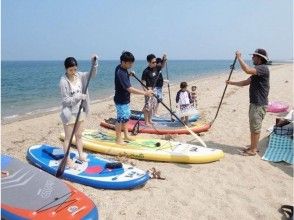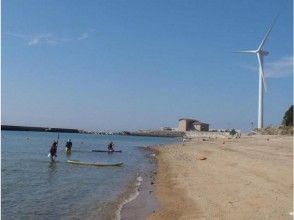Activity Provider of this plan
- Handmade / Handcraft workshops Japanese crafts making / Japanese miscellaneous goods Japanese crafts making / Japanese miscellaneous goods Hobby / Cultural experience Traditional culture experience Traditional culture experience Miscellaneous goods making / Handmade general goods Perfume / Incense making / Aroma blending Sightseeing tour/Guided tour Factory tours / Brewery tours Factory tour Vocational experience
| Authorization issued by | Governor of Hyogo Prefecture, Type 3 Travel Agency |
|---|---|
| Insurance information | Tokio Marine & Nichido Fire Insurance, Domestic Travel Accident Insurance, Death and Persistent Disability 5 million yen, Hospitalization 3,000 yen, Medical Treatment 2,000 yen, Liability 10 million yen |
| License and Qualifications | Minami Awaji City certified tourist guide, etc. |
一般社団法人淡路島観光協会 handling plan list
Awaji Island popular plans
Japanese crafts making / Japanese miscellaneous goods Search from area
Find other experiences in neighboring areas
JPY
~
(with tax)
![[Awaji, Hyogo] Learn from active craftsmen of a manufacturer that preserves traditional handmade manufacturing, and experience some of the processes involved in making incense, a traditional industry on Awaji Island, in a town of incense that has continued since the Edo period.の紹介画像](https://img.activityjapan.com/10/58861/10000005886101_nXyAW2Zv_4.webp?version=1745205481)
![[Awaji, Hyogo] Learn from active craftsmen of a manufacturer that preserves traditional handmade manufacturing, and experience some of the processes involved in making incense, a traditional industry on Awaji Island, in a town of incense that has continued since the Edo period.の紹介画像](https://img.activityjapan.com/11/58861/11000005886102_nXyAW2Zv_4.png?version=1745205481)
![[Awaji, Hyogo] Learn from active craftsmen of a manufacturer that preserves traditional handmade manufacturing, and experience some of the processes involved in making incense, a traditional industry on Awaji Island, in a town of incense that has continued since the Edo period.の紹介画像](https://img.activityjapan.com/11/58861/11000005886103_nXyAW2Zv_4.png?version=1745205489)
![[Awaji, Hyogo] Learn from active craftsmen of a manufacturer that preserves traditional handmade manufacturing, and experience some of the processes involved in making incense, a traditional industry on Awaji Island, in a town of incense that has continued since the Edo period.の紹介画像](https://img.activityjapan.com/11/58861/11000005886104_nXyAW2Zv_4.webp?version=1745205489)
![[Awaji, Hyogo] Learn from active craftsmen of a manufacturer that preserves traditional handmade manufacturing, and experience some of the processes involved in making incense, a traditional industry on Awaji Island, in a town of incense that has continued since the Edo period.の紹介画像](https://img.activityjapan.com/11/58861/11000005886105_nXyAW2Zv_4.webp?version=1745205489)
![[Awaji, Hyogo] Learn from active craftsmen of a manufacturer that preserves traditional handmade manufacturing, and experience some of the processes involved in making incense, a traditional industry on Awaji Island, in a town of incense that has continued since the Edo period.の紹介画像](https://img.activityjapan.com/11/58861/11000005886106_nXyAW2Zv_4.jpg?version=1745205489)
![[Awaji, Hyogo] Learn from active craftsmen of a manufacturer that preserves traditional handmade manufacturing, and experience some of the processes involved in making incense, a traditional industry on Awaji Island, in a town of incense that has continued since the Edo period.の紹介画像](https://img.activityjapan.com/11/58861/11000005886107_nXyAW2Zv_4.jpg?version=1745205489)
![[Awaji, Hyogo] Learn from active craftsmen of a manufacturer that preserves traditional handmade manufacturing, and experience some of the processes involved in making incense, a traditional industry on Awaji Island, in a town of incense that has continued since the Edo period.の紹介画像](https://img.activityjapan.com/11/58861/11000005886108_nXyAW2Zv_4.jpg?version=1745205491)
![[Awaji, Hyogo] Learn from active craftsmen of a manufacturer that preserves traditional handmade manufacturing, and experience some of the processes involved in making incense, a traditional industry on Awaji Island, in a town of incense that has continued since the Edo period.の紹介画像](https://img.activityjapan.com/11/58861/11000005886109_nXyAW2Zv_4.jpg?version=1745205491)
![[Awaji, Hyogo] Learn from active craftsmen of a manufacturer that preserves traditional handmade manufacturing, and experience some of the processes involved in making incense, a traditional industry on Awaji Island, in a town of incense that has continued since the Edo period.の紹介画像](https://img.activityjapan.com/11/58861/11000005886110_nXyAW2Zv_4.jpg?version=1745205491)
![[Awaji, Hyogo] Learn from active craftsmen of a manufacturer that preserves traditional handmade manufacturing, and experience some of the processes involved in making incense, a traditional industry on Awaji Island, in a town of incense that has continued since the Edo period.の紹介画像](https://img.activityjapan.com/11/58861/11000005886111_nXyAW2Zv_4.jpg?version=1745205492)
![[Awaji, Hyogo] Learn from active craftsmen of a manufacturer that preserves traditional handmade manufacturing, and experience some of the processes involved in making incense, a traditional industry on Awaji Island, in a town of incense that has continued since the Edo period.の紹介画像](https://img.activityjapan.com/11/58861/11000005886112_nXyAW2Zv_4.jpg?version=1745205492)
![[Awaji, Hyogo] Learn from active craftsmen of a manufacturer that preserves traditional handmade manufacturing, and experience some of the processes involved in making incense, a traditional industry on Awaji Island, in a town of incense that has continued since the Edo period.の紹介画像](https://img.activityjapan.com/11/58861/11000005886113_nXyAW2Zv_4.jpg?version=1745205494)
![[Awaji, Hyogo] Learn from active craftsmen of a manufacturer that preserves traditional handmade manufacturing, and experience some of the processes involved in making incense, a traditional industry on Awaji Island, in a town of incense that has continued since the Edo period.の紹介画像](https://img.activityjapan.com/11/58861/11000005886114_nXyAW2Zv_4.jpg?version=1745205494)
![[Awaji, Hyogo] Learn from active craftsmen of a manufacturer that preserves traditional handmade manufacturing, and experience some of the processes involved in making incense, a traditional industry on Awaji Island, in a town of incense that has continued since the Edo period.の紹介画像](https://img.activityjapan.com/11/58861/11000005886115_nXyAW2Zv_4.jpg?version=1745205495)
![[Awaji, Hyogo] Learn from active craftsmen of a manufacturer that preserves traditional handmade manufacturing, and experience some of the processes involved in making incense, a traditional industry on Awaji Island, in a town of incense that has continued since the Edo period.の紹介画像](https://img.activityjapan.com/11/58861/11000005886116_nXyAW2Zv_4.jpg?version=1745205496)
![[Awaji, Hyogo] Learn from active craftsmen of a manufacturer that preserves traditional handmade manufacturing, and experience some of the processes involved in making incense, a traditional industry on Awaji Island, in a town of incense that has continued since the Edo period.の紹介画像](https://img.activityjapan.com/11/58861/11000005886117_nXyAW2Zv_4.jpg?version=1745205498)
![[Awaji, Hyogo] Learn from active craftsmen of a manufacturer that preserves traditional handmade manufacturing, and experience some of the processes involved in making incense, a traditional industry on Awaji Island, in a town of incense that has continued since the Edo period.の紹介画像](https://img.activityjapan.com/11/58861/11000005886118_nXyAW2Zv_4.jpg?version=1745205499)
![[Hyogo, Sumoto] Experience something out of the ordinary at Senkoji Temple, located on Sakiyama, which is said to be the first mountain to be created in Japan in the "creation mythology" <copying sutras experience>](https://img.activityjapan.com/10/58443/10000005844301_1Gz5AIDf_2.webp?version=1743129423)
![[Hyogo, Minami Awaji] Limited to one group (1-3 people) per day! A one-day course where you can enjoy Awaji Ningyo Joruri, guided by a current member of the troupe! A tour of Ebisu Shrine in a chartered taxi](https://img.activityjapan.com/10/58662/10000005866201_1Gz5AIDf_2.webp?version=1750746542)
![[Hyogo, Minami Awaji] Limited to one group (4-8 people) per day! Guided by an active puppeteer of Awaji Puppet Theater! A 3-hour tour in a chartered taxi around the areas associated with the Awaji Puppet Theater](https://img.activityjapan.com/10/58664/10000005866401_1Gz5AIDf_2.webp?version=1744344607)
![[Hyogo, Minami Awaji] Limited to one group (1-3 people) per day! Guided by an active puppeteer of Awaji Puppet Theater! A 3-hour tour in a chartered taxi around the areas associated with the show](https://img.activityjapan.com/10/58663/10000005866301_1Gz5AIDf_2.webp?version=1744343049)
![[Hyogo, Minami Awaji] Experience Zen meditation and appreciating the Nanga paintings of Gyokusei Jikihara at a Zen temple associated with the master of Nanga painting who grew up on Awaji Island.](https://img.activityjapan.com/10/58500/10000005850001_1Gz5AIDf_2.webp?version=1743403386)
![[Hyogo, Minami Awaji] Try your hand at making onigawara tiles, a tradition that has continued for over 400 years! Learn from a master craftsman, the oni-shi](https://img.activityjapan.com/10/58778/10000005877801_1Gz5AIDf_2.webp?version=1744699742)
![[Hyogo, Minami Awaji] Awaji tiles, a traditional industry with 400 years of history. A tile maker who continues to challenge himself to create the beauty of Japanese architecture. A coaster-making experience.](https://img.activityjapan.com/10/58552/10000005855201_1Gz5AIDf_2.webp?version=1743738427)
![[Hyogo, Minami Awaji] 400 years of history! Japan's three major tile production areas: Onigawara craftsmen on Awaji Island: Experience the craftsmanship of Onishi up close and see the manufacturing process! Awaji tile kiln tour experience](https://img.activityjapan.com/10/58514/10000005851401_1Gz5AIDf_2.webp?version=1743490147)
![[Hyogo/Awaji] Learn all about fragrances and then make your favorite scented sachet at an incense manufacturer that preserves traditional handmade manufacturing.](https://img.activityjapan.com/10/58819/10000005881901_nXyAW2Zv_2.png?version=1744872913)
![[Awaji, Hyogo] Learn about the history and basics of fragrance from a fragrance master in this town of incense that has been around since the Edo period, and create your own original incense by choosing the scent and shape.](https://img.activityjapan.com/10/58859/10000005885901_nXyAW2Zv_2.png?version=1745203267)
![[Hyogo, Awajishima] Japan's largest marine athletics! 2025 Frolic Sea Adventure Park Awajishima will be upgraded even further!](https://img.activityjapan.com/10/59037/10000005903701_6glI3R89_2.png?version=1746261869)
![Make memories on Awaji Island! Experience one-of-a-kind bear art and accessories! [★Families, couples, and pets welcome★]](https://img.activityjapan.com/10/59269/10000005926901_JPXg7sWy_2.jpg?version=1754256122)
![[Updated] Conquer the outdoors! Sauna x Bonfire x BBQ x Drum Barrel Bath x Camping x Saltwater Pool Plan](https://img.activityjapan.com/10/61421/10000006142101_7sOm7vgB_2.jpeg?version=1762312082)
![[Hyogo, Nushima] Onokoro Cruise around Nushima, the setting of Japanese mythology](https://img.activityjapan.com/10/53752/10000005375201_lpXgdgDW_2.webp?version=1712892966)
![[Hyogo / Awaji Island] Play in the sea on Awaji Island! Let's do SUP in Keino Matsubara! If you row on the board, it's a different space. With a guide accompanying photo shoot ♪](https://img.activityjapan.com/10/37064/10000003706401_FSQHK4Yx_2.jpg?version=1742539622)

